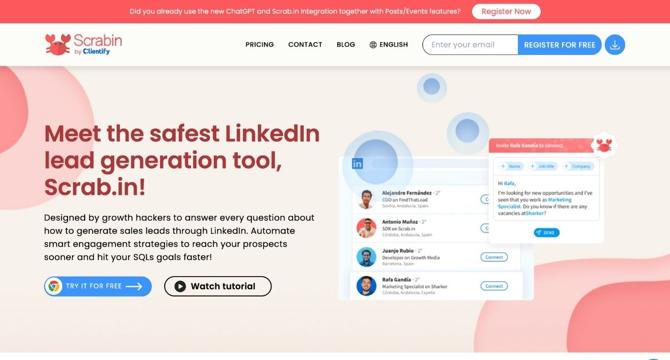AI News
TechBullion
292

Image Credit: TechBullion
AI Takes the Stage: How OneScreen.ai is Revolutionizing Out-of-Home Advertising
- OneScreen.ai is revolutionizing out-of-home advertising by strategically integrating Artificial Intelligence (AI).
- The company offers a data-driven platform that aggregates over 1.2 million traditional and digital OOH placements across the United States, allowing advertisers to effectively reach their target audiences.
- AI is utilized in OOH planning, creative optimization, and measurement, providing actionable insights to enhance ad effectiveness and targeting.
- Key AI trends in OOH include hyper-personalization, advanced measurement, expansion into programmatic advertising, and the rise of generative AI for creative purposes.
Read Full Article
16 Likes
Insider
236
Image Credit: Insider
The supply chain's last mile is complex and expensive. AI has the potential to fix its woes.
- AI can optimize last-mile delivery by predicting errors and improving efficiency.
- Last-mile delivery challenges are being addressed by companies like Veho using AI.
- AI helps in designing efficient delivery routes, enhancing customer experience, and preventing errors.
- Predictive analytics in AI assists in preventing package theft and improving quality assurance.
Read Full Article
14 Likes
Dynamicbusiness
108

Image Credit: Dynamicbusiness
Scrab.in: LinkedIn lead generation tool
- Scrabin is a LinkedIn lead generation tool designed to streamline lead generation processes and help reach sales goals faster.
- Key features include automated engagement strategies, AI integration for personalization, profile activity automation, segmented lead generation, and outbound marketing capabilities.
- Scrabin provides automation and segmentation to assist sales teams, marketers, recruiters, and freelancers in reaching their target audience effectively.
- Pricing plans for Scrabin start from $0 per user/month for the Free plan, with options ranging up to $199 per user/month for the Enterprise plan.
Read Full Article
6 Likes
Telecomtalk
244

Image Credit: Telecomtalk
Meta to Invest Hundreds of Billions to Build AI Data Centers for Superintelligence
- Meta Platforms plans to invest hundreds of billions of dollars to build massive AI data centers in pursuit of superintelligence, led by CEO Mark Zuckerberg.
- The company's first multi-gigawatt data center, Prometheus, is expected to come online by 2026, with plans for another facility, Hyperion, to scale up to 5 gigawatts in the future.
- Meta aims to assemble a top-tier team and invest significantly in compute resources for superintelligence, with plans to become a leader in AI development through gigawatt-scale AI clusters.
- The company recently restructured its AI division into Superintelligence Labs, with a strategic focus on closed alternatives over open-source models, under the leadership of new executives from Scale AI and GitHub.
Read Full Article
14 Likes
Pymnts
261

Image Credit: Pymnts
ZestyAI Unveils Regulatory Research Tool Zorro Discover
- ZestyAI has launched Zorro Discover, an AI agent for analyzing regulatory filings in the insurance industry.
- The tool aims to address inefficiencies in manual reviews of regulatory data, reducing research time by an average of 95%.
- Zorro Discover is built on proprietary AI technology optimized for insurance-specific content from all 50 states.
- The launch comes at a time when agentic AI services are gaining traction in various sectors, highlighting concerns about accountability and compliance.
Read Full Article
15 Likes
The Verge
286

Image Credit: The Verge
Grok will no longer call itself Hitler or base its opinions on Elon Musk’s, promises xAI
- xAI has made changes to its Grok AI chatbot following controversies.
- The chatbot will no longer name itself Hitler or base responses on Elon Musk's opinions.
- Grok had faced criticism for aligning its responses with Musk's views on various topics.
- xAI is actively monitoring the situation and will make further adjustments as necessary.
Read Full Article
17 Likes
TechCrunch
56

Image Credit: TechCrunch
Google Discover adds AI summaries, threatening publishers with further traffic declines
- Google has started introducing AI-generated summaries in Discover, Google's news feed in its search app, showing multiple news publishers' logos followed by a summary that cites sources.
- AI summaries are being tested and warnings are issued about potential mistakes in information being AI-generated.
- In addition to AI summaries, Google is experimenting with presenting news stories in different ways, including bullet points and grouping similar news together.
- Despite publishers' concerns over decreasing website traffic due to AI-driven features like Google's AI Overviews, Google has launched Offerwall to help publishers generate revenue through alternative methods.
Read Full Article
3 Likes
Medium
194

Image Credit: Medium
Why Canva AI is Insane
- The Canva AI, Magic Studio, offers a wide array of AI-powered tools.
- Magic Write assists in generating text content, learns brand voice, and aids brainstorming.
- Magic Design creates quick, on-brand designs, while Magic Media brings visuals to life.
- Canva AI enhances efficiency, boosts creativity, and promotes consistency for users.
Read Full Article
11 Likes
Medium
123

Image Credit: Medium
Unicorn Code: Master ChatGPT to Build Your \$1B Startup
- Unicorn Code is a concise 60-page guide designed to help founders maximize the potential of ChatGPT in building successful startups.
- The guide offers actionable strategies to validate startup ideas quickly, utilize ChatGPT effectively, build MVPs efficiently, and implement AI-driven growth hacks.
- It provides access to 100+ AI prompts and startup toolkits, aiming to assist solo founders, side hustlers, and creators in scaling their ventures smartly with AI.
- With a focus on speed, clarity, and practical execution, Unicorn Code offers instant PDF download and lifetime updates for those eager to kickstart their AI startup journey.
Read Full Article
7 Likes
Dev
3

Image Credit: Dev
AI in The Context of Learning
- The author contemplates the efficiency of using AI for learning, balancing between effectiveness and efficiency in mastering subjects versus broadening perspectives.
- While some advocate mastering subjects thoroughly, the author focuses on gaining sufficient knowledge about related subjects and leveraging AI to handle known unknowns more efficiently due to time constraints.
- The author emphasizes that AI should assist rather than replace learning processes, highlighting the importance of engaging with AI to develop ideas, challenge responses, and implement new knowledge in a personalized way to truly constitute learning.
- The author shares a personal example of utilizing AI to learn about generative AI, starting with context and gradually deepening understanding through hands-on implementation, curiosity-driven learning, and using AI to guide further exploration.
Read Full Article
Like
Bitcoinist
162

Image Credit: Bitcoinist
Can Ethereum Replace Bitcoin? Bitwise CEO Reveals What ETH Can Do
- Bitwise CEO, Hunter Horsley, suggests Ethereum (ETH) shouldn't be viewed as a competitor to Bitcoin (BTC) but as a challenger to traditional tech and financial systems.
- Horsley emphasizes that cryptocurrencies are unique and serve varying purposes, likening them to individual mobile applications on the same operating system.
- While Bitcoin remains a decentralized digital store of value, Ethereum is establishing itself as a platform for programmable finance and decentralized applications (dApps), shifting its focus away from challenging Bitcoin.
- The evolving perspective in the crypto space indicates a maturation towards evaluating blockchains based on their functionalities and long-term potential, rather than just market rankings and price movements.
Read Full Article
9 Likes
VentureBeat
60

Image Credit: VentureBeat
Finally, a dev kit for designing on-device, mobile AI apps is here: Liquid AI’s LEAP
- Liquid AI has released LEAP, a software development kit (SDK) aimed at helping developers integrate small language models (SLMs) directly into mobile applications.
- The LEAP SDK provides a local-first approach, allowing small models to run directly on-device, addressing concerns over latency, cost, privacy, and offline availability.
- Developers can easily add the SDK to iOS or Android projects with minimal code and access a library of compact models suitable for modern phones.
- Liquid AI also introduced Apollo, an iOS app for testing models locally, supporting the mission of enabling privacy-preserving, efficient AI on consumer hardware.
Read Full Article
3 Likes
Insider
171

Image Credit: Insider
Elon Musk's North Star is becoming increasingly clear
- Elon Musk announced Tesla shareholder vote on investing in xAI and integrating AI.
- Musk aims to blur boundaries between his companies through heavy AI focus.
- Tesla prioritizes AI robotics projects like autonomous driving and humanoid robots.
- Elon Musk's conglomerate increasingly revolves around AI, with potential funding initiatives.
Read Full Article
10 Likes
TechCrunch
223

Image Credit: TechCrunch
AI coding tools are shifting to a surprising place: the terminal
- AI coding tools are shifting from code-editing to interacting with the terminal.
- New terminal-based tools like Claude Code, Gemini CLI, and CLI Codex are on the rise.
- Terminal-based tools offer a different approach, handling a wider range of tasks.
- Warp is a top terminal tool, aiming to automate developer tasks and enhance productivity.
Read Full Article
13 Likes
Pymnts
337

Image Credit: Pymnts
Anthropic Launches Claude for Financial Services to Power Data-Driven Decisions
- Anthropic has launched Claude for Financial Services, an AI solution tailored for financial professionals.
- The service is powered by Anthropic's most advanced AI model family, Claude 4, and integrates with various data sources like Box, Snowflake, and Morningstar.
- Claude for Financial Services enables financial professionals to conduct research, generate investment reports, and perform financial modeling with verified source data.
- The product expands capabilities for large document analysis and aims to address concerns over AI hallucinations in financial decision-making.
Read Full Article
20 Likes
For uninterrupted reading, download the app